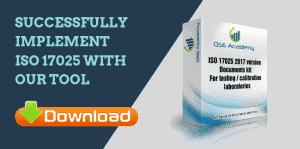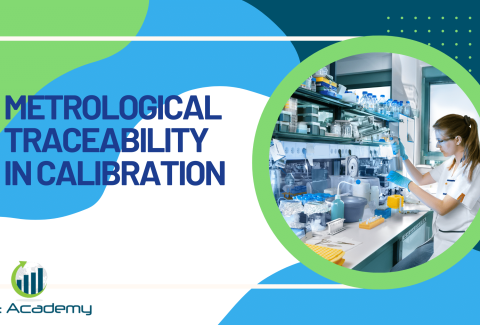What is Measurement Uncertainty?
Every calibration and test is associated with Measurement uncertainty. In any quantitative measurement done, the resulting value is an approximation of the real value.
This is because of the errors that arise at the different stages of sample preparation, sampling evaluation, and data measurement.
According to Measurement Uncertainty ISO 17025, the qualitative measurement should be reported as a single value together with the possible deviation from the actual value.
Qualitative results with uncertainty statements give an approximate measurement tolerance. It indicates the expected limits within which the measurement of real value should lie.
For instance, if a food sample report indicates 0.1 percent of compound X without the possible deviation value, the user is unsure whether this value could be 0.4 or 0.05 percent.
With this kind of documentation, the analyst can estimate the uncertainty level many times while the user or client of the data cannot.
Uncertainty information is particularly crucial if the specification limit requires undergoing verification and reporting. For example, if a certain product can only be approved if its compound X is below let’s say 0.5 percent, the test report will not have issues with compliance if the compound measurement is extended above 0.5 percent by the measurement uncertainty.
The measurement value extended by the estimated measurement uncertainty falls within the limit specification. Such parameters as demonstrated by the example are said to be within a specified tolerance.
ISO has put in place rules and guides in the evaluation and expression of measurement uncertainty across the measurement units. The body has introduced detailed documents containing exclusive guidelines on the application of the ISO guide concepts in chemical analysis.
Uncertainty evaluation is a relatively easy concept that does not need in-depth knowledge of statistics. You only need to understand the nature of the measurement method and the nature of the measurement.
Come up with the specifications by indicating what exactly is to be measured while defining how it relates to the parameters that influence the results. For instance, if the measurement temperature affects the results, you should indicate the specific temperatures under which the measurements should be taken.
The measurement process should have a workflow chart entailing calibration, sampling, measurement, sample preparation, data transcription, and evaluation.
Find the possible sources of uncertainty for every parameter and part of the process and list them. Some of the possible error sources include; chemical impurities, unsuitable measurement conditions, wrong calibrated devices, non-representative sampling, and data evaluation errors.

Do the estimation of every uncertainty in terms of RSDs or standard deviation and document it. This data should be collected from a sequence of measurements. in case experimental assessment is impractical or impossible, you should estimate the individual contributions from the available sources.
The supply information, proficiency testing, or interlaboratory studies could have this type of estimation. You should ensure to document the thoughts and procedures behind the way contributions have been estimated or measured.
Develop an overall value by combining separate contributions. For instance, if the uncertainty sources are independent, one can calculate the total uncertainty as to the multiple of the squared contributing uncertainty components sum, all expressed as standard deviations. This calculation can be automated by using spreadsheets and computer software programs.
The entire process must be correctly documented to provide adequate information. This helps in the reevaluation of the results if new data or information is acquired. Comprehensive documentation should contain;
• A full description of the methodology used in calculating the measurement result, together with its measurement uncertainty.
• The values and sources of all alterations
• A list of all the uncertainty components. This should include a complete explanation of how each of these uncertainty components was evaluated.
Laboratories require accreditation for them to carry out analytical operations. One of the integral components that accrediting bodies consider when issuing laboratories with an accreditation certificate is the expression of ‘Uncertainty in Measurements.’ product components should have a high degree of exactness in measurement especially with the globalization of technology and trade. In consultation with several international organizations.
The International Bureau of Weights and Measures (BIPM) developed a new ISO standard on the Expression of Uncertainty in Measurements in 1995.
Looking for More Resources on ISO 17025?
If you found this article helpful, explore our premium resources designed to help you achieve ISO 17025 certification efficiently:
- 📦 Complete Documentation Package for ISO/IEC 17025 2017: Get all the essential templates and documents you need for fast, easy implementation.
- 🎓 Online Course on ISO/IEC 17025 2017 : Enroll in our comprehensive training to master the key concepts and practical steps toward certification.
- 📋 ISO/IEC 17025 2017 Checklist: Download our detailed checklist to ensure you’ve covered every step of the process.
These resources are tailored to meet your needs and ensure a smooth certification journey. Explore them today and get one step closer to success!























